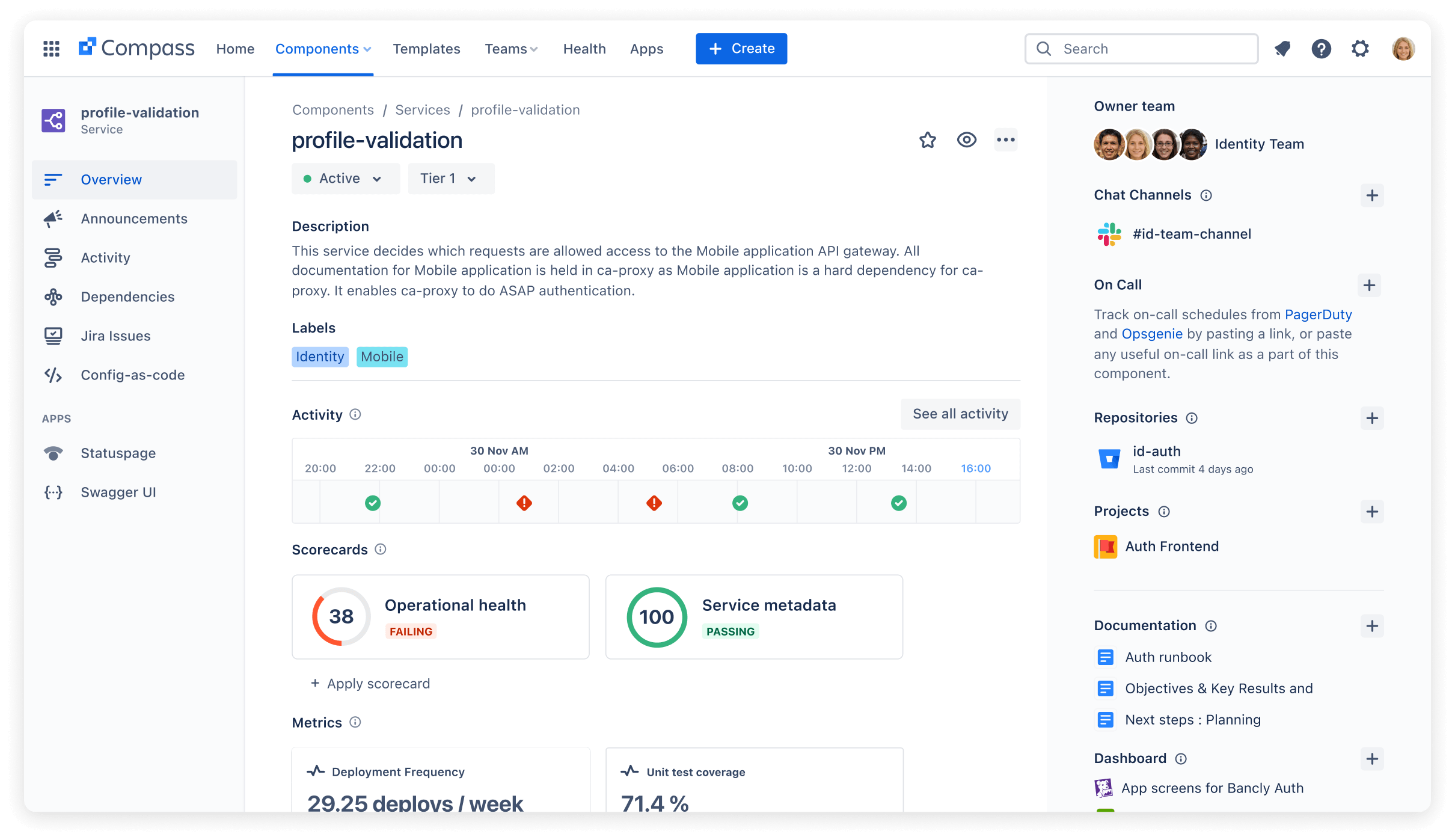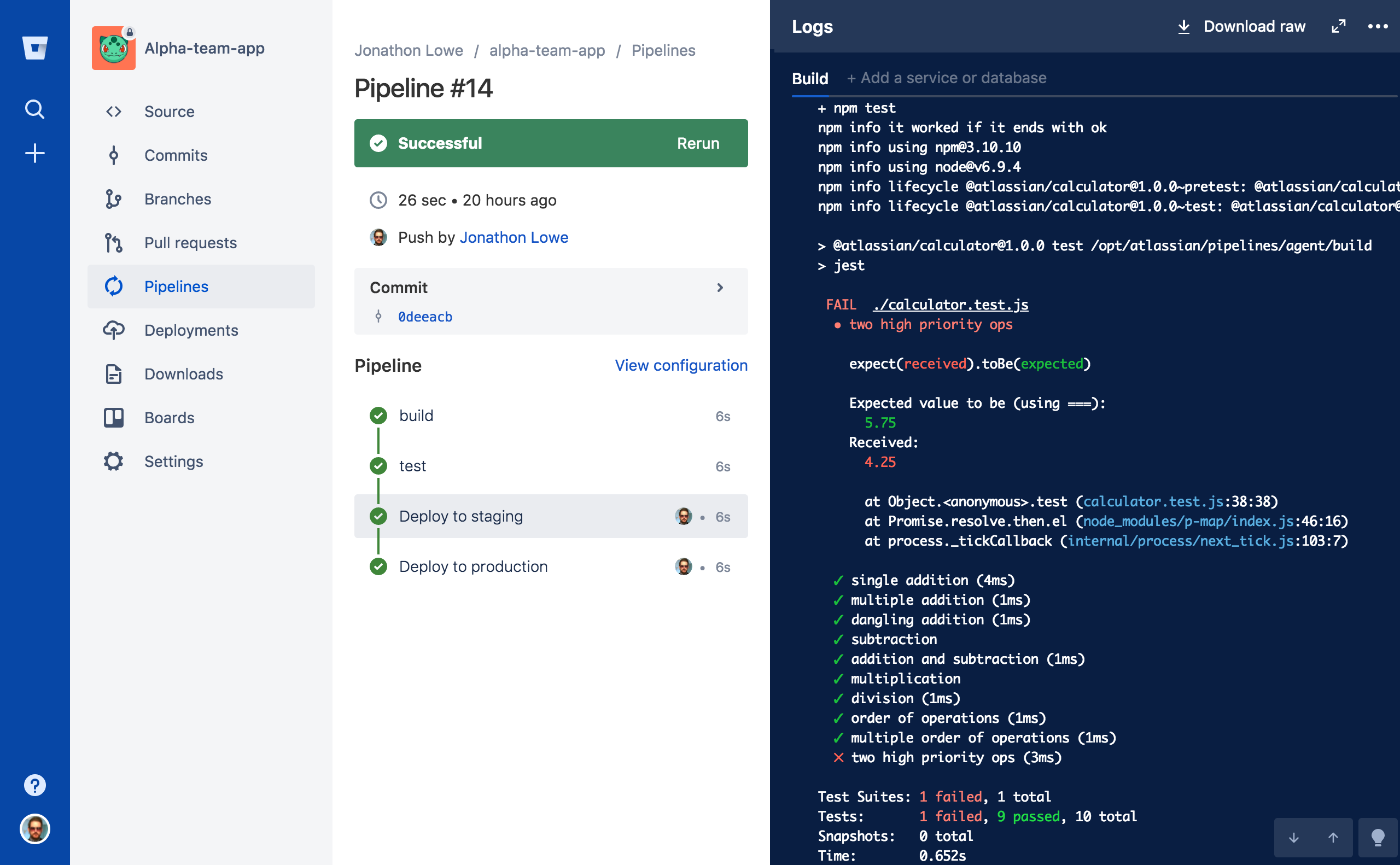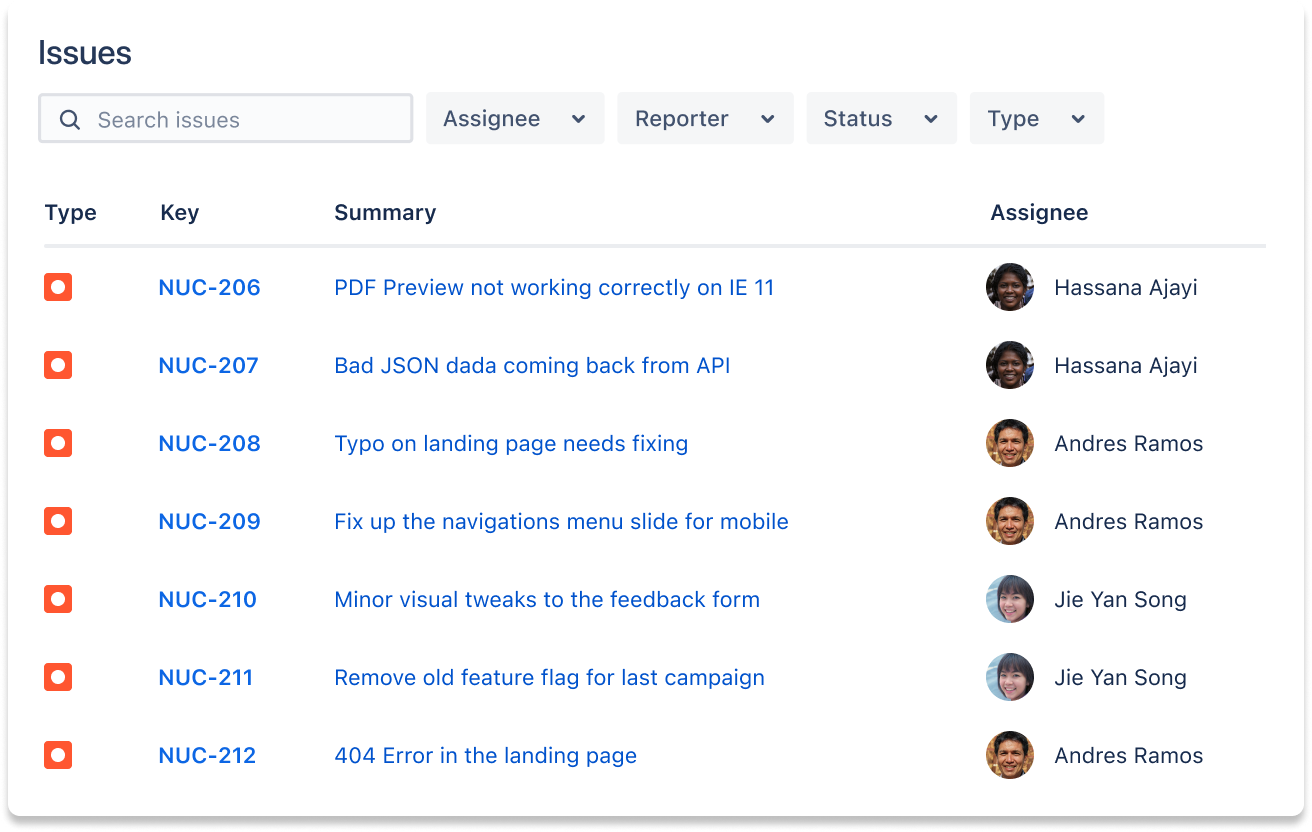7 top microservices monitoring and testing tools
Microservices have dramatically changed how people think about software design, moving from a monolithic architecture to smaller autonomous units. Microservices are adaptable, scalable, and easy to implement. However, this change has also added complexity to monitoring and updating these distributed systems.
That’s why microservices monitoring and testing tools are invaluable. They ensure each service works well and fits the overall design, which keeps the system reliable. They also help teams find and fix problems quickly. Considering the numerous advantages of microservices, it’s no surprise so many companies use them.
Microservices tools like Atlassian's Compass are necessary to guide you through complicated distributed software architectures. Compass aims to be an extensible developer experience platform that can handle the complexities of distributed architectures. It makes orchestrating microservices easier because it centralizes and combines knowledge about engineering output and team collaboration.
This guide provides an overview of microservices tools, including the different kinds, the most essential features, and seven of the best tools on the market.
Compass を無料で試す
開発者のエクスペリエンスを向上させ、すべてのサービスをカタログ化し、ソフトウェアの健全性を高めましょう。
What are microservices tools?
Microservices tools are specialized pieces of software that make it easier to build, launch, and maintain apps using a microservices architecture. They handle critical tasks, such as finding network applications, distributing load, and managing configurations, to make the microservices environment more efficient and stable.
Microservices let other microservices use their features when needed by giving them the Application Programming Interfaces (APIs), which enable two software components to communicate. One famous example is Netflix’s API gateway, which manages its streaming services.
However, not all APIs qualify as microservices. Restful APIs, for example, facilitate communication between services. On the other hand, microservices are a method of application development, whereas REST APIs emphasize design principles and communication methods.
関連資料
分散するソフトウェアを管理する
ソリューションを見る
Compass による DevEx の向上
Types of microservices tools
Microservices tools fall into two broad groups: monitoring tools and testing tools. Microservices monitoring tools track health and speed. They provide a comprehensive view of the health and performance of a microservices architecture by collecting and analyzing data from various sources, such as application logs, metrics, and infrastructure components, to identify and troubleshoot issues.
Microservice testing tools ensure the microservice works as expected in various situations and meets the application's requirements. They can be used to test microservices in isolation and in integration with other microservices and the overall system.
7 top microservices tools
Specific microservices tools are essential for DevOps teams looking to manage their microservices architectures effectively in Open DevOps. These include tools that help with CI/CD, ITSM, documentation, bug tracking, monitoring and logging, and testing.
Here are seven of the best microservices tools available:
Best for managing microservices: Compass

Compass is an ideal server management tool. It simplifies handling microservices architectures by putting disconnected data about engineering work and teamwork together in one central, searchable location.
Compass' features include:
- 関連する API、ライブラリ、ドキュメント、主な健全性指標、最近のデプロイ・アクティビティ、オンコール・スケジュールなど、サービスの詳細を完全に可視化します。
- Document and track upstream and downstream dependencies and understand performance impact across teams and services.
- View all incidents, deployments, and other critical activities for a service and its dependencies in one place.
Best for CI/CD: Bitbucket Pipelines

CI/CD is an acronym for continuous integration and continuous deployment.
Bitbucket Pipelines is a CI tool that automates processes. It works right out of the box with Bitbucket, an Atlassian cloud-based version control system. It can use code to manage pipelines, letting users commit pipeline definitions and start builds fast. Bitbucket Pipelines also has CD features that allow you to deploy projects to live infrastructure.
Part of the CI/CD development process is to build microservices. Bitbucket Pipelines fosters efficiency by simplifying workflows and integrating with Bitbucket's cloud version control system.
Best for ITSM: Jira Service Management
Jira Service Management is an add-on for Jira Software, a microservices-based application that lets you control IT services, such as incident, problem, and change management. Jira Service Management’s ITSM features allow IT teams to provide excellent service. There are several reasons why that is the case:
- Flexibility: JSM's collaborative approach can help streamline service delivery processes.
- Automation: The automation suite can help automate recurring tasks.
- Integration: JSM integrates seamlessly with other Atlassian tools.
- Security: It encrypts all data in transit using TLS 1.2+.
- Scalability: JSM is an agile ITSM product that can scale up to the enterprise level.
Best for documentation: Confluence
Confluence is a collaborative documentation tool. It’s ideal for creating and sharing documentation, critical in microservices architectures. Confluence offers a wide range of Confluence templates for various setups, including those using Kubernetes and Docker, a microservices tool that helps developers build, deploy, and run containers.
Confluence templates include multiple features and apps to help you capture, distribute, and update your technical documentation. Also, with Confluence, you can centralize all your documentation in one place and grant access to users only to what they need.
Best for bug tracking: Jira Software

Jira Software excels at bug tracking and project management. It provides a platform to track, prioritize, and resolve bugs effectively through an easily navigable interface. Jira Software's bug-tracking features contribute significantly to successful microservices management. They also address the potential for software sprawl.
With Jira Service Management, Jira's capabilities extend to streamline IT service management, including incident, problem, and change management within microservices and monolithic architecture.
Best for monitoring and logging: Prometheus
Prometheus is an open-source tool developers use to manage microservices. It collects extensive metrics, including counters, gauges, histograms, and summaries, that comprehensively view the application's performance. Prometheus also assists in real-time troubleshooting by providing a comprehensive monitoring and alerting system that enables developers and IT teams to identify and resolve issues promptly.
Best for testing microservices APIs: Postman
The distributed nature of microservices architectures significantly hamper traditional testing methodologies. Testing the entire system becomes complex and time-consuming because each microservice is an independent component. This is where a specific microservices testing tool like Postman comes in handy.
Postman simplifies the process of testing microservices APIs. Developers love that it can automate testing, enabling faster and more accurate results.
Some of the ways Postman simplifies the process of testing microservices APIs include:
- Visual request builder: Postman's visual request builder makes it easy to construct HTTP requests without writing code.
- Request collections: Postman allows you to organize your API requests into collections, making it easy to group related requests and share them with other team members.
- Predefined tests: Postman provides a library of predefined tests that you can use to validate the responses from your API requests.
- Test scripts: Postman allows you to write test scripts using JavaScript, giving you more control over your tests and enabling you to automate complex testing scenarios.
Manage microservices better with Compass
Microservices are beneficial but can become complex as companies grow. However, Atlassian's Compass addresses this issue.
Compass is an extensible developer platform that simplifies managing microservices by displaying all critical data in one place. It brings disconnected information about engineering output and team collaboration together in a central, searchable location.
Thanks to its flexibility, Compass can adapt to different microservices setups, providing unique tools and information. It also helps you to make better decisions, solve problems quickly, and promote effective teamwork. Compass helps teams find issues, track changes, and maintain high-quality service by giving a complete system picture.
By handling complex details, Compass not only simplifies current issues but also prepares for future growth and changes in design. Like an accurate compass, it helps teams navigate the complexity of microservices with confidence and clarity.
Microservices tools: Frequently asked questions
Why is monitoring and testing important in microservices architecture?
Monitoring and testing are essential in microservices architecture because they ensure the application is reliable, works well, and is generally healthy. Microservices may not work well for users, applications may stop working, or the system may fail if businesses don't complete regular testing and monitoring.
What are some common challenges in monitoring microservices?
Managing dependencies between services, dealing with greater complexity, and collecting data can be challenging when monitoring microservices. Effective tracking strategies, complete tool sets, and teamwork between development and operations teams can help companies deal with these problems.
マイクロサービスの監視とテストのベスト・プラクティスは何ですか?
マイクロサービスを効果的にテストして監視するには、監視データを使用し、適切なアラート・レベルを設定し、テストを自動化し、継続的インテグレーションとデリバリーのパイプラインを設定し、パフォーマンスとセキュリティを定期的にテストします。プラットフォームは、これらの方法によって確実に動作します。
アトラシアン・コミュニティに参加して、マイクロサービスの記事やディスカッションをご覧ください。
この記事を共有する
次のトピック
おすすめコンテンツ
次のリソースをブックマークして、DevOps チームのタイプに関する詳細や、アトラシアンの DevOps についての継続的な更新をご覧ください。

Compass コミュニティ

チュートリアル: コンポーネントを作成する
